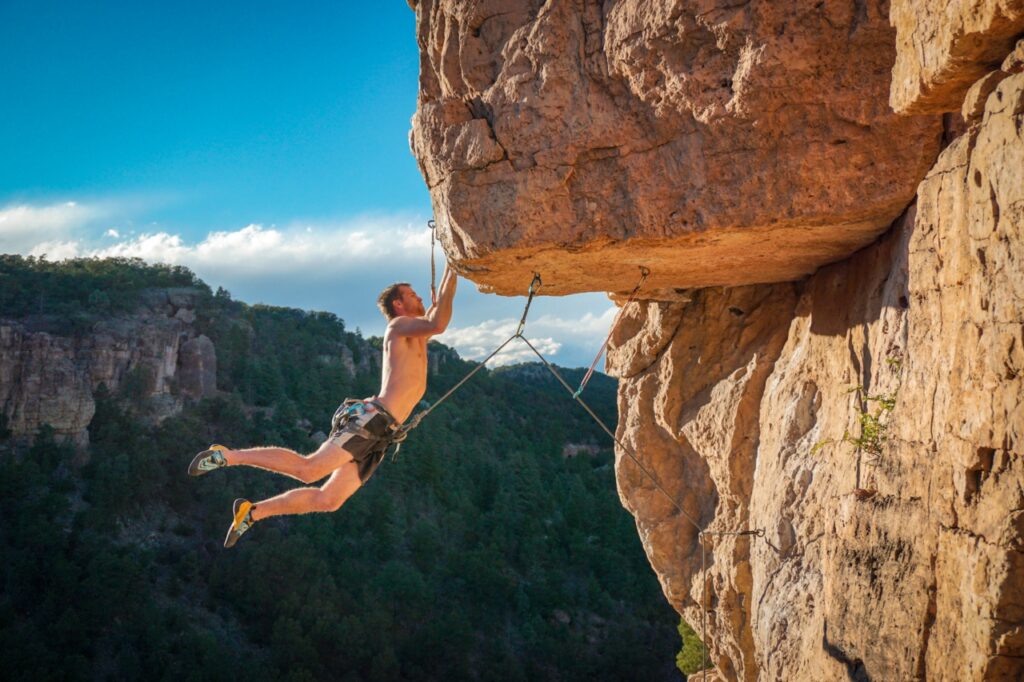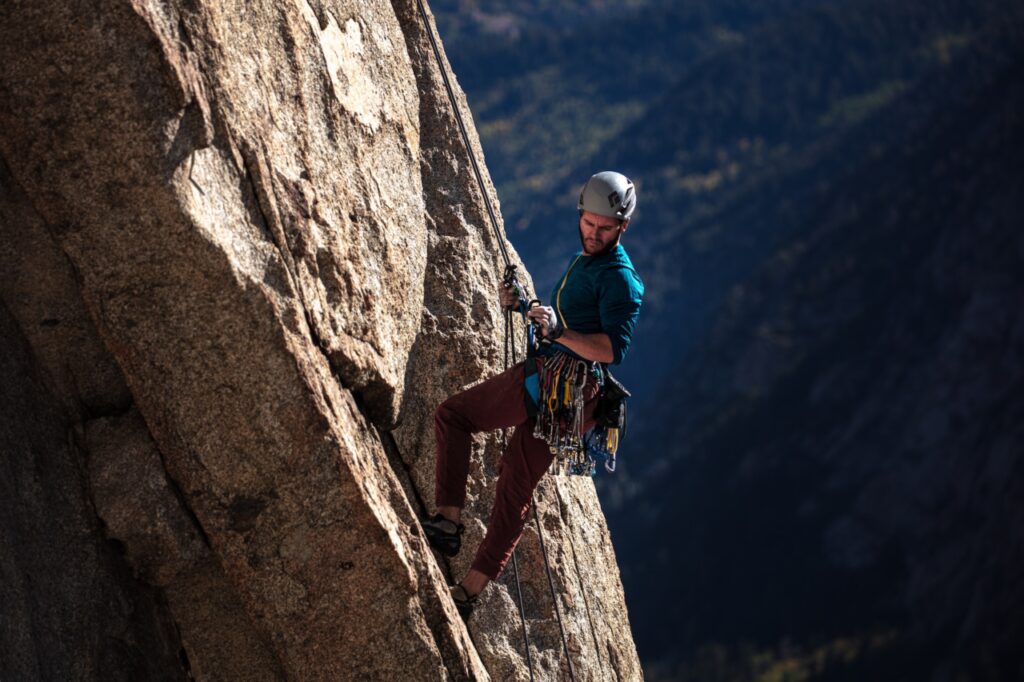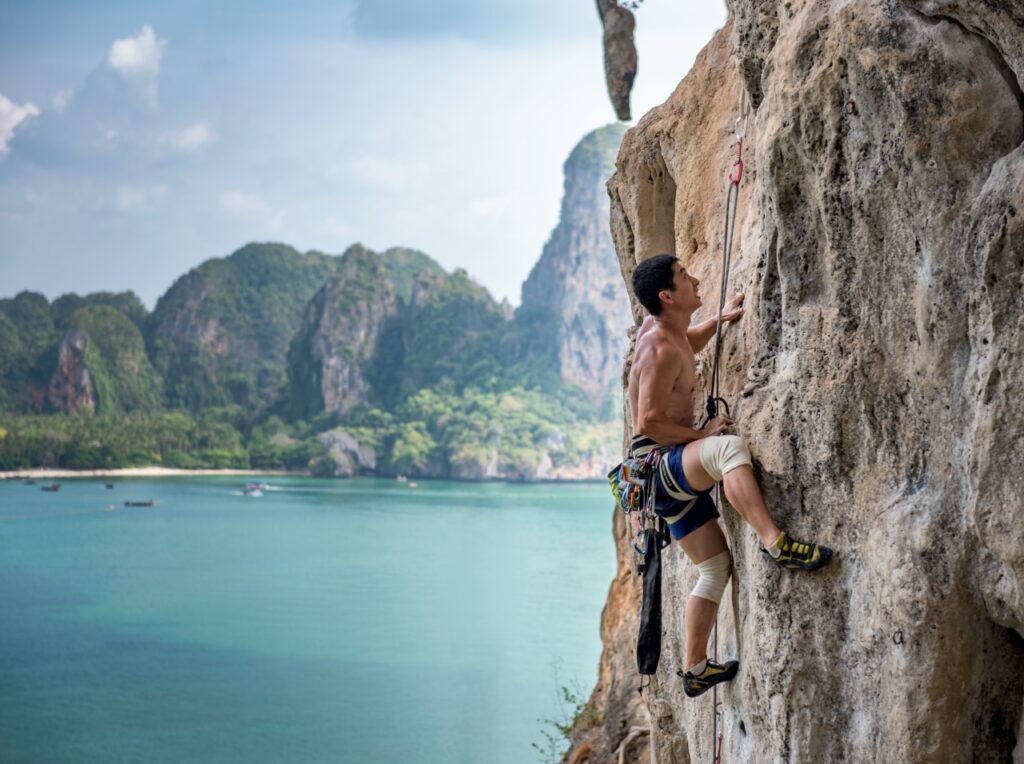Rock climbing is an exhilarating and physically demanding sport that attracts adventure enthusiasts from all walks of life. Whether you’re a seasoned climber or a beginner looking to explore the vertical world, one question that often arises is, “Can I wear my glasses when rock climbing?” It’s a valid concern, as having a clear vision is crucial for both safety and performance during this challenging activity. In this article, we’ll delve into the topic and provide you with insights on whether wearing glasses while rock climbing is feasible, practical, and safe. So, let’s dive in and discover the best options to help you see clearly while conquering those towering cliffs.
Table of Contents
Can I wear my glasses when rock climbing
 The Importance of Clear Vision When Climbing
The Importance of Clear Vision When Climbing
Rock climbing is a physically and mentally demanding sport that tests a climber’s strength, endurance, and balance. However, many climbers do not realize that their visual skills play a crucial role in judging the distance between rocks or whether one foothold is more secure than another. Without well-developed visual skills, a climber’s ability to successfully reach the top of a cliff or mountain will not be easy. Therefore, clear vision is essential when climbing. Here are some reasons why:
Judging distance
A climber’s visual skills play a crucial role in judging the distance between rocks or whether one foothold is more secure than another. A clear vision helps climbers to accurately judge distances and make informed decisions about where to place their hands and feet.
Eye-hand-body coordination
To climb safely, a climber’s eyes need to quickly and efficiently send signals to their hands and feet, alerting them to the best route to follow or the sudden appearance of a rattlesnake. Clear vision helps to improve eye-hand-body coordination, allowing climbers to move more smoothly and efficiently.
Safety
Climbing can be dangerous, and clear vision is essential for a climber’s safety. With clear vision, climbers can quickly and accurately assess their surroundings, identify potential hazards, and make informed decisions about how to proceed.
Risks Associated with Wearing Glasses While Climbing
 Wearing glasses while climbing can pose some risks that climbers should be aware of. Here are some of the potential risks associated with wearing glasses while climbing:
Wearing glasses while climbing can pose some risks that climbers should be aware of. Here are some of the potential risks associated with wearing glasses while climbing:
Broken glasses
If you fall and break your glasses, you risk cutting yourself on the glass. Moreover, if you scratch or damage your glasses while climbing, it can create challenges for you. If you can’t see, you will be unable to determine what is safe and what is not, which could lead to some pretty bad results.
Scratched or damaged glasses
If you scratch or damage your glasses while climbing, it can create challenges for you. If you can’t see, you will be unable to determine what is safe and what is not, which could lead to some pretty bad results.
Ill-fitting glasses
Ill-fitting glasses can cause discomfort or even fall off during a climb. Make sure that your glasses fit securely and snugly around your head, and consider using neck cords to keep them from falling off and breaking.
Distraction
If your glasses move or slide on your face while climbing, you increase your risk of injury due to their distraction instead of concentrating on your climb.
Precautions to Take When Wearing Glasses While Climbing
 When engaging in outdoor activities such as climbing, it’s essential to prioritize safety and protect your eyes. If you wear glasses, taking proper precautions becomes even more crucial. Here are some valuable tips to ensure your glasses stay secure and your vision remains uncompromised during your climbing adventures.
When engaging in outdoor activities such as climbing, it’s essential to prioritize safety and protect your eyes. If you wear glasses, taking proper precautions becomes even more crucial. Here are some valuable tips to ensure your glasses stay secure and your vision remains uncompromised during your climbing adventures.
- Use a neck cord or strap to keep your glasses attached to your head. One of the simplest and most effective ways to prevent your glasses from falling off is by using a neck cord or strap. These handy accessories keep your glasses securely fastened around your neck when not in use, reducing the risk of loss or damage.
- Tighten your eyeglass frames to prevent them from slipping. Before you embark on your climbing journey, make sure your glasses fit snugly on your face. Adjust the frames to provide a secure fit and minimize the chances of your glasses slipping down your nose during physical exertion.
- Consider using over-the-glasses goggles for added protection from debris and sunlight. Over-the-glasses goggles are designed to fit comfortably over your eyewear. These goggles offer an extra layer of protection against flying debris, dust, and harmful UV rays, shielding your eyes and ensuring clear vision.
- If possible, bring a backup pair of glasses in case of damage or loss. Accidents can happen, and it’s always wise to be prepared. Carrying a spare pair of glasses can be a lifesaver if your primary pair gets damaged, or lost, or even if the lenses become too dirty to see through clearly. Packing a backup ensures you can continue your climbing adventure without compromising your vision.
- Contact lenses can be an alternative option, but be cautious of dust or particulates getting in your eyes. For those comfortable wearing contact lenses, they can be a viable solution while climbing. However, keep in mind that the outdoor environment may introduce dust, dirt, or other particulates that can irritate your eyes when wearing contacts. Ensure you follow proper hygiene and consider the nature of the climbing terrain before opting for contacts.
- Rock-climbing sunglasses can also be a good option, either as an old pair that fits over your prescription glasses or as prescription sunglasses. Investing in a pair of rock-climbing sunglasses specifically designed for outdoor activities can offer added convenience and protection. You can either opt for sunglasses that fit comfortably over your existing prescription glasses or consider getting prescription sunglasses that cater to your vision needs.
- Ensure that your glasses fit firmly and comfortably when worn with a climbing helmet. If you plan to wear a climbing helmet, it’s essential to check that your glasses and the helmet fit together comfortably. Ensure there is no excessive pressure or discomfort caused by the combination, as this can distract you during your climb. Make any necessary adjustments to achieve a secure and pleasant fit.









Discussion about this post